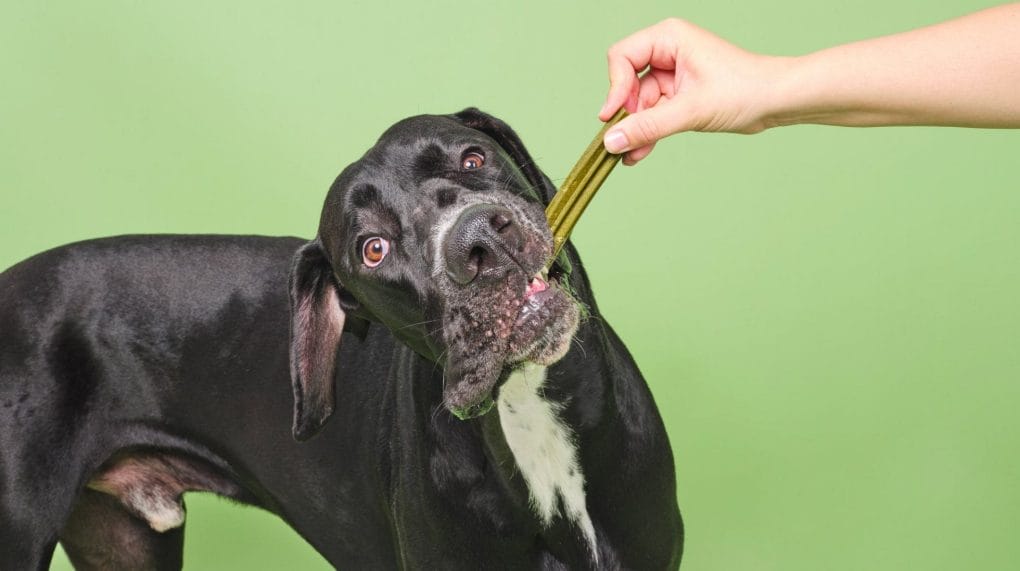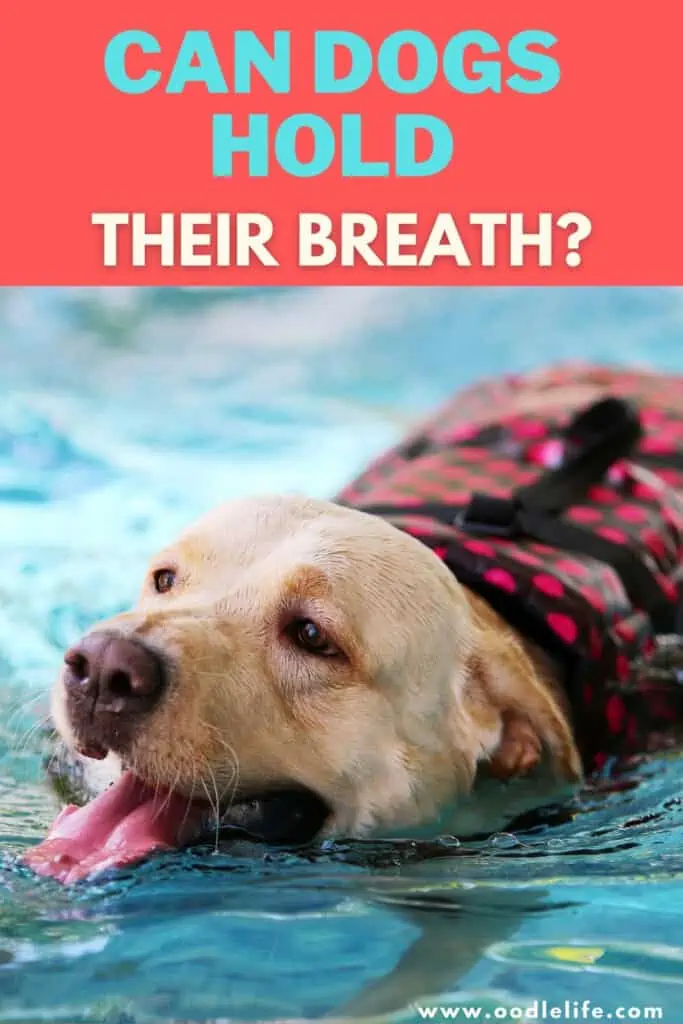Have you ever wondered just how long a dog can hold its breath? It’s a question that many pet owners may have pondered, especially when it comes to activities like swimming or underwater playtime. In this article, we will explore the fascinating world of a dog’s lung capacity and their ability to hold their breath, shedding light on just how long they can stay underwater before needing to resurface for air. Get ready to be amazed by the incredible abilities of our canine companions!

The Basics of Canine Respiration
The canine respiratory system is a vital component of a dog’s overall health and well-being. Understanding how dogs breathe and the intricacies of their respiratory system is important for pet owners. By familiarizing ourselves with the basics of canine respiration, we can better care for our furry friends.
Understanding Dog Respiratory System
Dogs, like humans, rely on their respiratory system to take in oxygen and expel carbon dioxide. The dog’s respiratory system consists of the nose, throat, trachea (windpipe), lungs, and diaphragm. When a dog inhales, air enters through the nose, passes through the throat, and into the windpipe. From there, it travels into the lungs where oxygen is exchanged for carbon dioxide. The diaphragm, a large muscle located beneath the lungs, helps facilitate this process by contracting and relaxing.
The Rate and Depth of Canine Breathing
The rate and depth of a dog’s breathing can vary depending on factors such as age, breed, and activity level. On average, dogs typically take around 10 to 30 breaths per minute, whereas puppies may breathe faster due to their higher metabolic rate. Additionally, larger dogs tend to have a slower breathing rate compared to smaller breeds. The depth of a dog’s breath, or tidal volume, can range from shallow breaths during rest to deeper breaths during exercise or excitement.
Reasons Dogs Might Hold Their Breath
While holding one’s breath may seem like a behavior reserved for humans, dogs can also exhibit this behavior under certain circumstances. Understanding why dogs may hold their breath can help us identify any potential underlying issues or dangers they may face.
Diving Underwater
Some dogs are trained to dive underwater and retrieve objects, such as during water rescue missions or canine sports. Holding their breath allows them to swim efficiently without inhaling water. However, it is essential for owners to ensure that their dogs are properly trained and supervised during any underwater activities to prevent accidents or injuries.
Medical Reasons
In some cases, dogs may hold their breath due to medical reasons. Respiratory conditions, such as a collapsed trachea or lung disease, can cause discomfort or difficulty breathing. Dogs may instinctively try to avoid triggering any pain or discomfort by momentarily holding their breath. If you notice your dog consistently holding its breath or displaying any signs of respiratory distress, it is vital to consult a veterinarian for a thorough examination and appropriate treatment.
During Sleep or Relaxation
Similar to humans, dogs may hold their breath momentarily during sleep or relaxation. This is typically a natural part of the relaxation process and should not cause concern. However, if your dog is regularly holding its breath for extended periods during sleep or relaxation, it is advisable to have them evaluated by a veterinarian.

Average Duration a Dog Can Hold Its Breath
The ability for a dog to hold its breath can vary depending on several factors, including breed, age, and overall health. While it is challenging to establish an exact duration, we can examine the general trends and factors that impact a dog’s breath-holding capability.
Differences Between Breeds
Breeds that are adapted for water activities, such as Labrador Retrievers or Portuguese Water Dogs, may have a greater capacity to hold their breath compared to breeds that are not naturally inclined for aquatic endeavors. However, even within breeds, individual differences in lung capacity and tolerance to breath-holding may exist.
Age and Health’s Impact on Breath-Holding Capability
Age and health can significantly impact a dog’s breath-holding capability. Puppies, with their developing respiratory systems, may have a more limited ability to hold their breath compared to adult dogs. Similarly, dogs with pre-existing respiratory or cardiovascular conditions may have reduced breath-holding capacity. It is important to consider these factors and consult with a veterinarian to ensure your dog’s safety.
World Records for Dogs Holding Their Breath
Believe it or not, there are world records for dogs holding their breath! These extraordinary feats require extensive training and precautions to ensure the well-being of the dogs involved.
Longest Time Recorded
According to the Guinness World Records, the longest time a dog has held its breath underwater is an astounding 10 minutes and 5 seconds. This record was achieved by a Labrador Retriever named Sophie, trained by professional dog trainer Monte Geneve.
Training and Precautions Involved in Setting Records
Setting a world record for holding one’s breath is no easy feat, and it requires meticulous training and preparation. Professional trainers work closely with the dogs, gradually increasing their breath-holding capacity through specialized techniques. It is crucial to note that these records should not be attempted without proper training and under the guidance of professionals to avoid any harm to the dog.

Dangers of Dogs Holding Their Breath Too Long
While some dogs may be able to hold their breath for extended periods, it is essential to recognize the potential dangers associated with prolonged breath-holding.
Risk of Asphyxiation or Drowning
Holding one’s breath for too long can put dogs at risk of asphyxiation or drowning, especially when underwater. The longer a dog holds its breath, the higher the chances of oxygen deprivation, which can lead to a loss of consciousness or, in extreme cases, death. It is crucial to ensure the safety and well-being of our furry friends by avoiding situations that may put them at risk of asphyxiation or drowning.
Signs of Oxygen Deprivation
It is important to be able to recognize the signs of oxygen deprivation in dogs to intervene promptly. Some common signs include rapid or labored breathing, disorientation, weakness, bluish discoloration of the gums or tongue, and collapse. If you suspect that your dog may be experiencing oxygen deprivation, seek immediate veterinary attention.
Long-Term Brain Damage
Prolonged oxygen deprivation can have severe consequences, including long-term brain damage. The brain relies on a constant supply of oxygen to function properly, and depriving it of this vital element can result in permanent neurological deficits. It is crucial to prioritize our dog’s safety and well-being by avoiding situations that pose a risk of prolonged breath-holding.
How to Tell if Your Dog is Holding Its Breath
It is essential for dog owners to be able to identify if their furry companions are holding their breath, especially during activities that may involve breath-holding or when there are signs of potential respiratory distress.
Visible Signs
Observing your dog’s behavior can provide valuable insights into whether they are holding their breath. Look for moments when they temporarily stop breathing or seem to be avoiding inhaling. Also, pay attention to any facial or body expressions that indicate discomfort, such as tensing up or freezing.
Changes in Behavior
In addition to visible signs, changes in behavior can also indicate that your dog is holding its breath. Restlessness, pacing, or avoiding certain activities that require breath-holding may suggest that your dog is trying to avoid discomfort or pain associated with breathing.
Using Monitoring Equipment
There are devices available, such as pulse oximeters, that can measure the oxygen saturation levels in your dog’s blood. These non-invasive tools can provide valuable information about your dog’s respiratory health and help detect any potential issues or episodes of breath-holding. Consult with your veterinarian to determine if monitoring equipment is appropriate for your dog’s needs.

What to Do If Your Dog is Holding Its Breath Regularly
If you notice that your dog is holding its breath regularly, it is crucial to take appropriate action to ensure their well-being and address any underlying issues.
Contacting a Veterinarian
Consulting with a veterinarian should be the first step if your dog regularly holds its breath. They will be able to perform a thorough examination, assess your dog’s respiratory health, and provide appropriate guidance and treatment options.
Administering First Aid
In some cases, immediate intervention may be required if your dog is experiencing respiratory distress. Basic first aid techniques, such as the Heimlich maneuver for choking or rescue breathing, may be necessary to alleviate the immediate danger. However, it is essential to seek professional veterinary care as soon as possible.
Preventative Measures to Avoid Regular Breath-Holding
Prevention is key when it comes to addressing regular breath-holding in dogs. Identifying and addressing any underlying medical conditions, providing a safe and secure environment, and avoiding activities that pose a risk of prolonged breath-holding are crucial steps in ensuring your dog’s respiratory health.
Training Your Dog to Hold Its Breath Safely
While prolonged breath-holding should generally be avoided, there are specific training exercises that can be beneficial for dogs under controlled conditions.
Benefits of Underwater Exercises
Underwater exercises, when conducted safely and under professional guidance, can offer numerous benefits for dogs. They can improve muscular strength, cardiovascular health, and overall stamina. However, it is crucial to emphasize that such activities should only be undertaken with proper training and supervision to prevent any harm to the dog.
Training Methods and Precautions
If you are interested in training your dog to hold its breath safely, consult with a professional trainer experienced in underwater exercises. They can guide you through appropriate training methods, gradual progressions, and precautions to ensure the safety and well-being of your dog.

Canine Medical Conditions That Affect Breath Holding
Several medical conditions can impact a dog’s ability to hold its breath or lead to abnormal breathing patterns.
Respiratory Disorders
Respiratory disorders such as asthma, bronchitis, pneumonia, or lung cancer can significantly affect a dog’s breath-holding capability. These conditions may result in discomfort, difficulty breathing, or exacerbate episodes of breath-holding. Prompt veterinary attention is essential to diagnose and treat these disorders effectively.
Cardiovascular Diseases
Cardiovascular diseases, such as congestive heart failure or heartworm disease, can impair a dog’s ability to breathe properly. These conditions may cause fluid accumulation in the lungs or decrease the efficiency of the heart’s pumping capacity, leading to respiratory distress and alterations in breath-holding capability. Close monitoring and appropriate treatment are necessary for dogs with cardiovascular diseases.
Neurological Conditions
Certain neurological conditions can also impact a dog’s respiratory health. Disorders affecting the brainstem, which controls vital functions like breathing, can result in abnormal respiratory patterns or inhibit the ability to hold one’s breath. Consulting with a veterinarian specializing in neurology is crucial in diagnosing and managing these conditions.
Understanding Your Dog’s Limits
Respecting your dog’s capabilities and limits is paramount in providing them with appropriate care and ensuring their safety.
Respecting Canine Capabilities
Remember that each dog is unique, and their abilities may vary based on factors such as breed, age, and overall health. Avoid pushing your dog beyond their limits or engaging in activities that pose a significant risk to their respiratory health. Pay attention to any signs of discomfort or distress and adjust accordingly.
Knowing When to Seek Medical Attention
If you notice any concerning changes in your dog’s breathing patterns, breath-holding frequency, or signs of respiratory distress, it is essential to seek veterinary attention promptly. Early detection and intervention can significantly impact your dog’s health and quality of life.
In conclusion, understanding the basics of canine respiration, recognizing reasons dogs might hold their breath, and being aware of the risks and consequences that come with prolonged breath-holding are vital for dog owners. By staying informed, seeking professional guidance when needed, and prioritizing our dog’s well-being, we can ensure they breathe easy and live happy, healthy lives.





Leave a Reply
You must be logged in to post a comment.